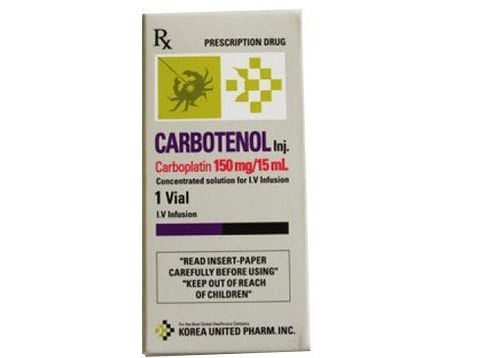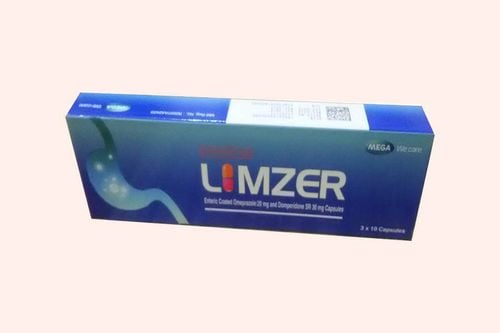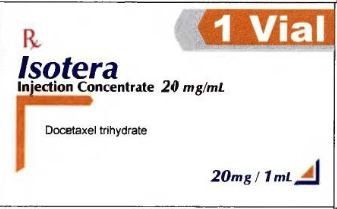This is an automatically translated article.
Radiation therapy is one of the main treatments in head and neck cancer. The radiation doses used to kill cancer cells can also damage normal cells and cause side effects. Side effects of radiation therapy are cumulative. This means that the more courses of treatment done over time, the higher the risk of side effects.
1. What is radiation therapy for head and neck cancer?
Radiation therapy means using high-energy X-rays to damage a cell's DNA and kill cancer cells or stop them from reproducing. This method is used to treat many types of cancer. It is estimated that 50% of cancer patients will receive radiation therapy during their cancer treatment.
Radiation therapy is called a local treatment because it only affects a specific area of the body where the tumor is growing. There are two main types of radiation therapy: external radiation (a beam of radiation that is directed at the body from outside) and internal radiation therapy (the source of radiation is placed inside the body and near the tumor).
Radiation therapy is often used to treat head and neck cancer, before or after surgery. The radiation doses used to kill cancer cells can also damage normal cells in the treated area. Damage to normal cells is the cause of common side effects of radiation therapy. Possible side effects of radiation therapy are directly related to the area of the body being treated. If the patient is receiving radiation therapy for head and neck cancer, side effects often occur in these areas.
2. What are the side effects of radiation therapy for head and neck cancer?
Side effects depend on the location and spread of the head and neck cancer and whether it is combined with chemotherapy. Radiation side effects are cumulative, which means that the more courses of treatment done over time, the higher the risk of side effects. Most patients do not have any side effects until several weeks of radiation therapy. Although the side effects can be bothersome, there are ways to help improve symptoms. Most side effects are temporary, going away over time once therapy is complete.
2.1 Short-term side effects Here are some of the most common side effects of radiation therapy for head and neck cancer. However, treatments can affect each patient in different ways.
Skin irritation: The skin in the treatment area may be red, irritated, dry or sensitive. It will look like sunburn at first. Patients should take gentle skin care to avoid further irritation and bathe carefully, using only warm water and mild soap. Avoid scented body washes or soaps as they can cause further irritation. Avoid exposure to the sun. Sore throat and mouth: Also known as esophagitis or mucositis. This symptom tends to begin after 2-3 weeks of treatment. It begins to improve about 2 weeks after treatment ends. Pain when swallowing, due to sore throat and mouth: Your doctor may prescribe pain relievers and help with nutritional problems. If the pain makes it impossible for the patient to eat or drink, a temporary nasogastric tube may be used during treatment to maintain nutrition and prevent weight loss. . However, it is important that patients practice swallowing even with a nasogastric tube in place. Otherwise, the patient's swallowing muscles may weaken. This will cause permanent swallowing problems and make it difficult to stop using the nasogastric tube even after radiation therapy has ended. Dry mouth and/or thick saliva: This side effect tends to develop after a few weeks of treatment. This may be a temporary side effect, which will go away after treatment, or it may be a permanent loss of salivation. Taste changes: May include a metallic taste and an unwillingness to eat certain foods. Although the problem of taste changes usually goes away with time after therapy ends, it can last a year or longer. Ear pain: May be the result of earwax becoming hard. These signs tend to improve in the weeks following treatment. Sometimes ear drops to soften the earwax can be helpful for the patient. Hair loss: Patients may experience hair loss in the area receiving the radiation. Hair usually begins to grow back a month or so after treatment. However, hair may not grow back exactly as it did before treatment and for some people the hair loss becomes permanent. Fatigue: Very common with radiation treatment and tends to start after several weeks of treatment. Fatigue usually subsides slowly over the weeks and months following treatment. Swelling or change in the texture of the skin in the treatment area. 2.2 Long-term side effects The side effects listed above tend to occur during treatment for up to several months after treatment. Long-term effects can occur months to years after cancer treatment and the risks depend on the area of the body being irradiated. They also depend on the radiation techniques used. Some of the possible long-term side effects of radiation therapy for head and neck cancer are listed below:
Secondary cancer growth in or near the area being treated with radiation (rare). The disease develops because healthy tissues are constantly exposed to radiation. Many current radiation techniques are designed to limit this exposure, but it is not always possible to prevent all exposure and still achieve the desired results. Dry mouth can become a long-term problem for some patients, which can greatly affect a patient's quality of life and oral health. Your doctor will provide oral care instructions and recommend products to improve salivation. Difficulty swallowing: Some cancer patients have long-term swallowing problems. In addition, radiation can lead to the development of scar tissue. This can lead to swallowing problems years after treatment. Fibrosis: Scarring of the muscles that occurs in the treatment area, causing the muscle to feel stiff. These muscles may become tight, stiff, painful, and/or become weak. Scarring of the muscles in the neck can cause the head to rotate and tilt to one side. Physical therapy, certain medications, and cancer rehabilitation can be very helpful in this case. Nerve damage: Nerves in the area of radiation therapy can be damaged or obstructed by scar tissue, leading to weakness or pain in the area. Lymphedema of the face, chin, and neck area may occur in rare cases. Notify your doctor if you notice swelling in the head and neck area. Physical therapy may be used to treat lymphedema. Jaw stiffness is a chronic contracture of the muscles that control the opening and closing of the mouth, resulting in the inability to open the mouth normally. This can make it difficult to eat, speak, or perform oral care. Your doctor may recommend jaw exercises to help treat a stiff jaw. For some patients, manipulation of the jaw by a dentist can be helpful. In some cases, a prosthetic (a dental prosthetic and/or face) may be used to assist with swallowing and speaking. In summary, radiation therapy for head and neck cancer is a common method in the treatment process for patients. However, radiation therapy can cause a number of temporary or long-term side effects that significantly affect a patient's quality of life. Each person may have different side effects from radiation therapy. It is best for patients to consult their doctor about possible side effects and how to manage them.
Please dial HOTLINE for more information or register for an appointment HERE. Download MyVinmec app to make appointments faster and to manage your bookings easily.
References: Oncolink.org












